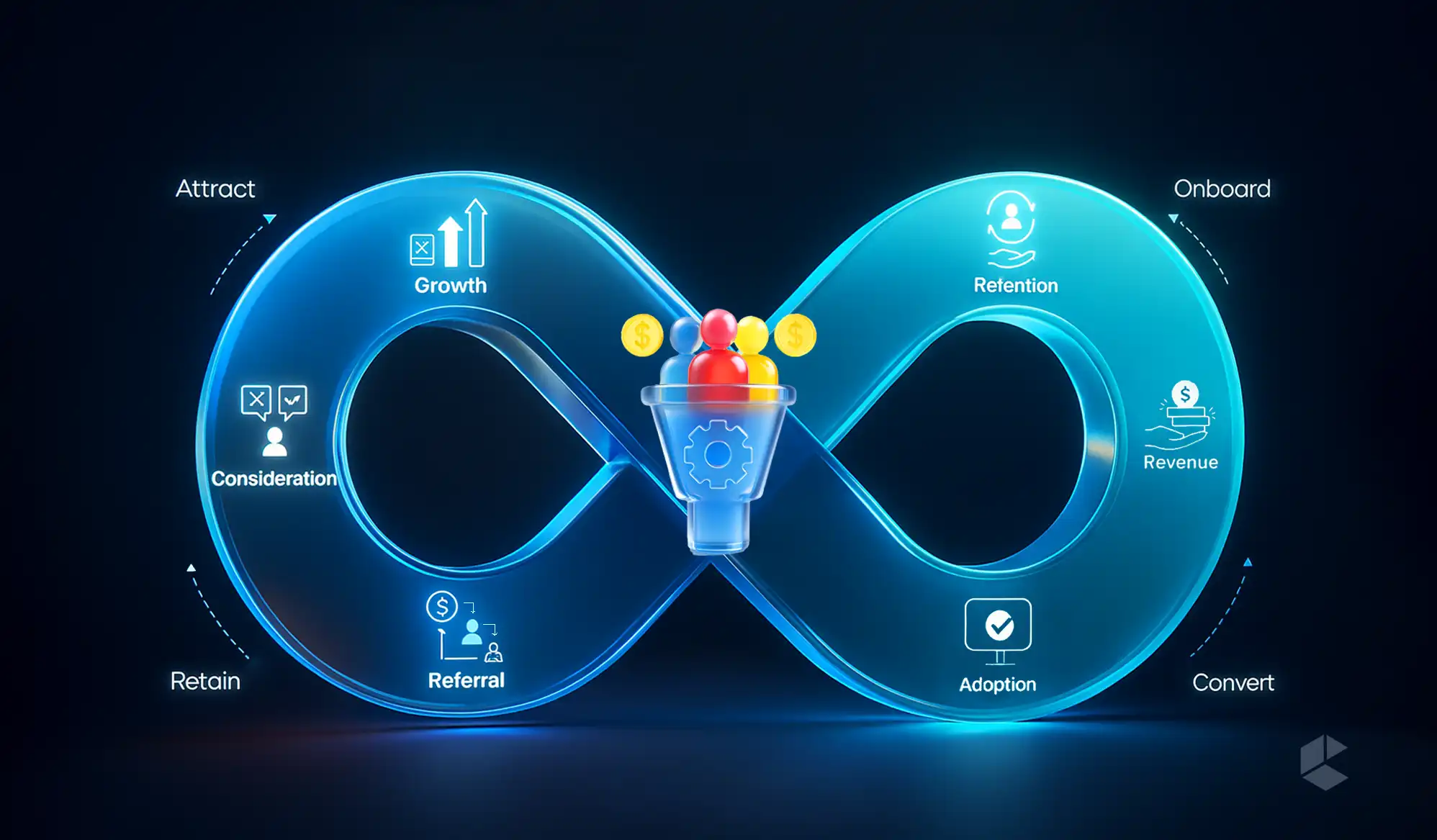Key Takeaways
- Pimcore allows you to centralize and manage product catalog data across all your channels and departments.
- Its flexible data modeling capabilities allow it to easily manage complex products, variants, bundles, and any B2B-specific catalog structures.
- Integration with ERP, DAM, and eCommerce platforms ensures real-time data synchronization and automation.
- Localization and multilingual tools make Pimcore a great fit for global businesses managing regional catalogs.
- Powerful workflow automation and version control built into the platform eliminates repetitive tasks, enabling teams to be more efficient and accurate with data.
- Pimcore’s headless framework and API-driven delivery method future-proofs the eCommerce ecosystem.
In the hyper-connected world of eCommerce, managing a live and ever-expanding product catalog is a challenging endeavor. Consumers now expect personalized experiences, real-time updates, and easy navigation throughout all channels, and traditional catalog management systems continue to fall short in helping meet these expectations.
That’s where Pimcore comes in – a powerful, open-source solution making waves for all the right reasons. It doesn’t just store data, it reinvents the way businesses organize, enrich, distribute, and scale their product catalogs across multiple touchpoints.
In this blog, we are going to look at how Pimcore enhances product catalog management for eCommerce organizations, what makes it unique, and how it helps brands elevate themselves in an increasingly competitive environment.
Why is Product Catalog Management Important for Ecommerce?
Before we dive into the details of Pimcore, let’s first highlight why product catalog management (PCM) should be at the top of mind in any eCommerce strategy.
Picture a customer browsing your website in search of a specific type of running shoe. They filter by size, color, brand, material, and price range, and then BAM! The page takes forever to load, or worse, it shows irrelevant products. That is a one-way ticket to cart abandonment.
You can avoid and resolve this pain point by doing the following:
- Centralizing product data: Keep all product-related information, like names, SKUs, prices, images, descriptions) in one location.
- Enrich product content: Add product specifications, digital assets, SEO tags, translations, and more.
- Reduce inconsistency: Check whether the same product data is being used on websites, marketplaces, apps, print catalogs, etc.
- Facilitating scalability: Make sure that a new category, attribute, or product line can be added at any time with no complexity.
A well-designed catalog management system connects the complexities of the backend to the simplicity expected on the front end for customers.
The Challenges of Traditional Product Catalog Management
Managing thousands of SKUs is more than just organizing them into the rows and columns of an Excel sheet or CMS. There are challenges that will quickly add up:
- Data silos: Product information is unorganized and scattered. While marketing has the images, the sales department has pricing, and the logistics department has inventory.
- Inconsistent attributes: Different products have different attribute structures, meaning they cannot be compared or filtered effectively.
- Channel fragmentation: Manual processes to update marketplaces, print catalogs, and web stores leave openings for mistakes.
- Lack of real-time control: When products need to be updated quickly (for instance, during flash sales, stockouts, etc.) the traditional manual processes don’t work.
- Limited searchability and filtering: If the product data isn’t organized correctly, it might not matter how appealing the front-end UI is; the user experience will be poor.
These bottlenecks slow down internal processes and will also affect the customer experience and ultimately profits.
Pimcore: The Product Catalog Management Solution
Pimcore isn’t just a PIM (Product Information Management) solution, it is a fully advanced Digital Experience Platform (DXP) in its core function as a data management tool. The product catalog capabilities are designed exactly toward resolving the common pain points experienced by enterprises in eCommerce solutions.
Here’s how Pimcore changes the equation:
1. Centralized and Consolidated Product Data
Pimcore provides one single source of truth for all your product information – descriptions, images, videos, technical specifications, localization data – allowing you to consolidate and centralize every product data structure to ensure that everyone in your organization, from content creators to supply chain managers, is seeing the same data at all times, and that data is always up to date.
2. Data Modelling Without Limits
Pimcore provides extreme flexibility when it comes to modeling your product data – it does not matter if you are offering 5,000 products or 5 million, you will be able to create as many attributes, variants, relationships, and hierarchies as you deem fit.
You can easily model more complex relationships, such as:
- Product Bundles
- Configurable Items
- Variant-based Products
- Cross-selling & upselling relationships
- Accessories & replacement parts
The ability to model at this level is particularly beneficial for categories like electronics, fashion, and automotive, where you want to be able to differentiate down to the most granular level.
3. Multichannel & Omnichannel Syndication
Pimcore provides the ease of publishing product catalogs to all sales and marketing channels:
- Ecommerce platforms (Magento, Shopify, BigCommerce)
- Marketplaces (Amazon, eBay, Flipkart)
- Print-ready exports (catalogs and brochures)
- Point-of-sale systems and mobile applications
Using APIs and data hubs, Pimcore automates syndication, so that you and your team members are not manually uploading CSV files to 10 different systems.
Real-Time Editing & Workflow Automation
Stop with the endless email chains and spreadsheets. Pimcore’s real-time collaboration and workflow automation means:
- Multiple teams can update product data in parallel.
- Changes are tracked and version-controlled.
- Review and approval flows can be defined by role or department.
For example, you can have a product manager enter data, have marketing increase its value with SEO content, and have the legal department approve it all within Pimcore.
Dynamic Product Filtering and Search
Pimcore’s granular product data structure makes filtering, searching, and merchandising on the front-end way more effective. Customers can slice through products based on any parameters, including size, weight, energy deficiency, and product origin, while even having an option for stuff like “suitable for winter use”.
This is especially valuable for:
- Fashion brands with size/color variants
- Electronics retailers with hundreds of feature-based filters
- B2B suppliers that share tiered pricing and technical specs
When filtering is intelligent, conversion rates receive a significant boost.
Localization & Multilingual Product Catalogs
Selling globally? With Pimcore’s localization, your product catalog can be quickly customized to fit multiple geographies and languages.
Each language or region can have:
- Descriptions in the local language
- Country-specific pricing
- Compliance labels or disclaimers
- Local availability
There’s no need to clone products for every single region. Instead, you build a localized layer on top of a centralized master data. It’s scalable, intelligent, and efficient.
Seamless Integrations with ERP, DAM, and Ecommerce Systems
One of the best things about Pimcore is that it works well with others. After all, a product catalog is useless if it exists in a silo, and Pimcore ensures that it does not.
It integrates with:
- ERP systems such as SAP, Microsoft Dynamics, or Oracle to sync your inventory, pricing, and supply chain information.
- Digital Asset Management (DAM) systems to manage any images, videos, 3D renders, manuals, and any rich media connected to products.
- Ecommerce systems such as Magento, Shopify, or WooCommerce to dynamically pull product information into storefronts.
This bidirectional data transfer allows for updates to occur in real-time on every level. Got a price decrease from the ERP? It drops immediately on the site. Uploaded a new image to the DAM? Instantly the right SKU is associated with it in Pimcore.
No more late-night CSV upload freakouts.
Automated Printed and Digital Output
While digital channels tend to dominate the market, print catalogs do still have a place, especially in B2B, luxury retail, and the industrial retail industry. Pimcore’s product catalog management extends beyond just the digital channels. With structured data models and integration to tools like Adobe InDesign, your business can produce:
- Custom brochures
- Catalogs for specific regions
- Personalized product sheets
- Flyers and data sheets
It is possible to fill templates dynamically with product data, decreasing the amount of manual work needed with DTP (Desktop Publishing). Fantastic for designers and a productivity win for marketers!
The Power of Pimcore Data Hub and Headless Delivery
All modern eCommerce experiences are omnichannel by design, and Pimcore’s Data Hub makes it incredibly easy to deliver validly structured product content to any frontend or third-party applications.
Utilizing technologies such as GraphQL and REST APIs, you can push product data to:
- Progressive web apps (PWAs)
- Native mobile apps
- In-store kiosks
- Marketplaces and aggregators
- Voice assistants
This headless architecture future-proofs your eCommerce stack. You can reconstruct your storefront or pivot to a new frontend framework without re-engineering your product data foundation.
Quality Control and Reporting with Dashboards
If you’re managing thousands (or millions) of products, you will require more than a spreadsheet to stay on top of data quality.
Pimcore comes with customizable data, quality dashboards, and reporting modules that help you to:
- Track missing or outdated fields
- Monitor completeness scores
- Detect inconsistent data across categories
- Visualize approval statuses and contributor workloads
This is a game changer for large teams or organizations working across different geographies and multiple channels, as it shifts catalog management from a reactive to a proactive space.
You and your team don’t just manage data – you own it.
Real-World Use Cases of Pimcore
1. Global Automotive Manufacturer – Printable Price Catalogs
A large automotive manufacturer centralized 45,000 SKUs, in over 40 languages, across more than 50 countries. Pimcore’s PIM/DAM was able to create 300-page printable catalogs while automating quality checks as well as exports.
2. Mom Store (India) – Enormous eCommerce Catalog
Mom Store is managing 85,000 products and 90+ attributes in Pimcore, which is integrated with Magento. They developed batch data enrichment queues and user-role-based access in Pimcore.
3. U.S. Packaging Distributor – Automated Data Enrichment
A leading U.S. packager streamlined their product listings for Magento using Pimcore. Now, data standardization for vendor information is immediately automated for them, along with catalog creation – no more manual updates.
4. Automotive Alliance Group – B2B Digital Catalog Completed in 40 Days
Automotive Alliance Group quickly developed a digital B2B catalog platform in 40 days with 700+ places of business, and 737 products – including digital assets and order capabilities in it.
5. Leading Automotive Accessories Brand – API-Driven PIM System
A large enterprise with 100 patents and multiple acquired brands, they consolidated different information from different platforms together in Pimcore. The result is a centralized way of managing products across multiple platforms.
What Makes Pimcore Future-Ready
Here’s a brief summary of why the best product catalog management comes from Pimcore:
- 100% Open Source – no licensing fees
- Extremely customizable, flexible data models
- Single integrated platform (PIM + DAM + CMS + CDP + MDM)
- Headless, API-first
- True B2C and B2B eCommerce
- Scales from startups to global enterprises
Whether you have 10 SKUs or 100,000, Pimcore offers the control, clarity, and speed that spreadsheets or legacy systems never could.
Final Thoughts
With AI recommendations, dynamic storefronts, and next-gen customer journeys, your product catalog and the data you drive it with, is much more than just backend fluff – it’s the foundation of your success.
With Pimcore, you can transform and harness the chaos of your product data into a competitive advantage. You can centralize, enrich, syndicate, and future-proof your catalog to focus on delivering remarkable experiences for your customers.
If you are committed to scaling your eCommerce business and creating seamless omnichannel-driven journeys, Pimcore is not an option, it is essential.
FAQs
Yes, Pimcore is well suited for catalogs that are complex and allows for the creation of your own data models to support millions of SKUs, numerous variants, and connections between products, ideal for industries with complexities like electronics, automotive, and B2B retail.
Absolutely. Pimcore has API-based, real-time integrations with Magento, Shopify, SAP, and more – so you get complete data transparency throughout your PIM, ERP, and eCommerce storefront.
Pimcore can offer localized versions for product data like language, pricing, availability, etc. without needing to duplicate the products. This is ideal for larger multinational eCommerce operations that are transacting multiple markets from a single platform.
There is an initial setup that has to be managed with some technical expertise and planning. As mentioned, Pimcore is very flexible, but there is a learning curve and generally requires developer involvement for the management of custom workflows and complex data models.
Yes, Pimcore has been designed with an integrated DAM that allows you to upload, tag and manage images, videos, and PDFs. Therefore, all of your assets can be kept in a centralized location while being connected to the right product and all sales channels.









